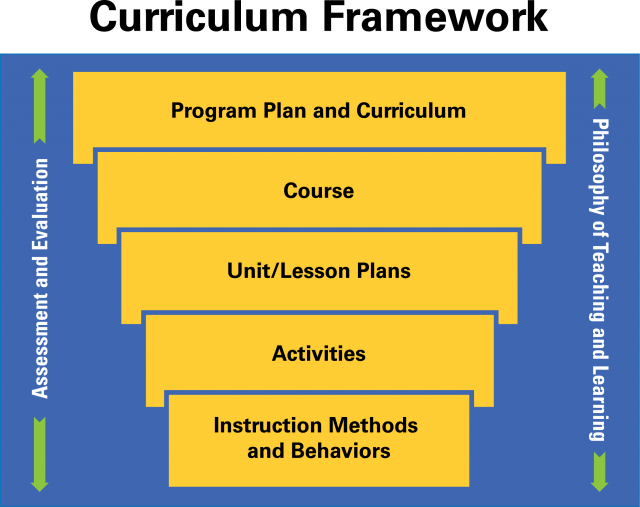Curriculum is a term that has multiple meanings. For our purposes we will use the definition:
“curriculum refers to the means and materials with which students will interact for the purpose of achieving identified educational outcomes” (Ebert, E.S., Ebert, C., & Bentley, M.L., 2013).
This graphic below highlights a way to view the pieces that make-up a curriculum. If we embrace this definition then it would serve us well to start designing the curriculum at the program level to make sure that the courses, units within the course, content, activities and instructional methods align with your program outcomes. If you have influence on the overall plant breeding program at your institution you can start there. If your influence extends only to the course you teach then developing your curriculum at the course or lesson plan level is appropriate.

No matter where you begin it is helpful to think about the philosophy you and faculty in your department have about teaching and learning before you start. This is so you can uncover the beliefs that drive how you think about what and how students learn, and how and you will teach. It is also helpful to be open to what researchers tell us about learning and what practices are getting results. And of course viewing your classroom as an active experiment where you are assessing and evaluating not only students, but your own effectiveness is an important on-going process for any educator.
Thinking about your philosophy on teaching & learning
To stimulate your thinking about your teaching and learning philosophy watch the following TED Talk: Inverting the Curriculum by AIex Diaz.
Diaz speaks to motivating students by starting with the big picture. This relates to the overall curriculum design. He questions why we start with the tiniest details when the big picture is much more motivating to our students.
Diaz’s talk gives a perspective on why professors may want to invert or flip not only our classrooms, but the entire curriculum. In the past, instructors were responsible for developing their own class in a vacuum, but today educators are realizing that if we start with the big picture and carry this to our courses and lessons students will not only be more motivated, but better prepared because they will be learning the right things.
![]()

Mike Retallick
Professor and Chair,
Iowa State University (ISU)
Phone: (515) 294-4810
Office:
201 Curtiss 513 Farm House Lane Ames, IA 50011
Contact the PLC team (pbeaplc@iastate.edu) if you are interested in our services or would like to include our work and staff in any funding opportunities.
